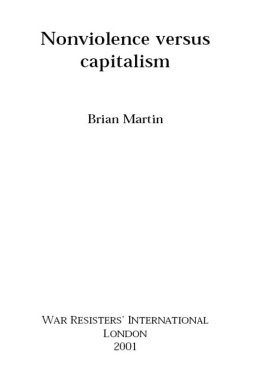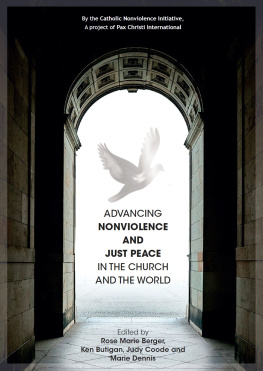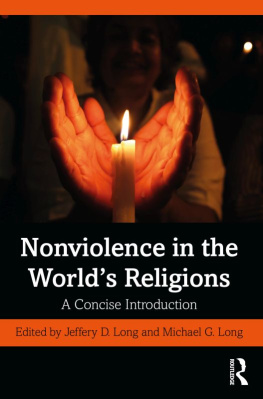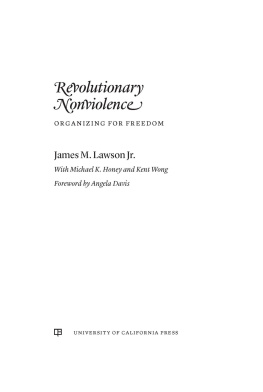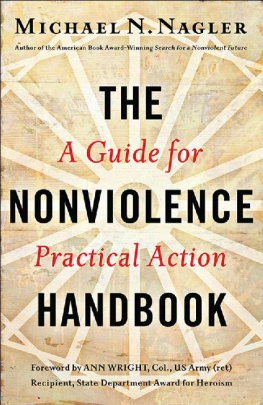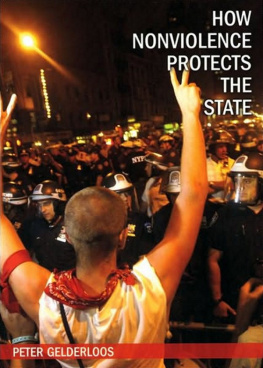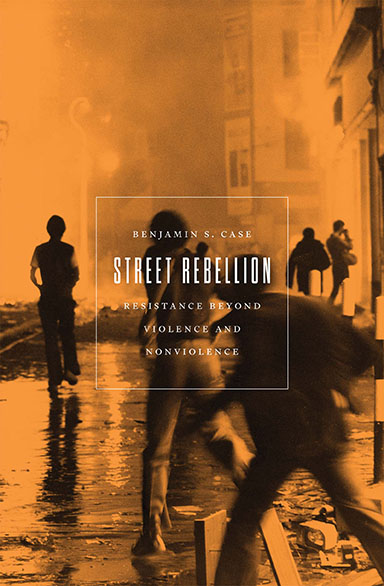Acknowledgments
This work is the result of innumerable conversations, experiences, and reflections over the course of almost eight years of research and writing. I would not have been able to produce these pages without the direct input, discussion, kindness, critique, and other forms of support from countless individuals and communities.
First and foremost, I am indebted to the many movements that have inspired, educated, and motivated me. I have more comrades than I am able to name who have mentored me, talked and argued with me, and struggled alongside me, whose wisdom and experience informs my own. I also have dozens of participants to thank who I cannot name, for their willingness to speak with me about their experiences with riotous protest. I hope I do justice to your words.
For the years of formal education and feedback, I am grateful to John Markoff, Mohammed Bamyeh, Tarun Banerjee, and Michael Goodhart. Also many thanks to Paul Welle, Junia Howell, Stellan Vinthagen, Dana Moss, Ben Manski, Hank Johnston, and AK Thompson, who generously offered their advice and support at different stages of this project.
For various forms of teaching, co-learning, camaraderie, care, and partnership that influenced this work or sustained me as it developed through some very difficult times, more thanks than I am able to express to: James Alex Siebens, Hatem Hassan, Hillary Lazar, Caitlin Schroering, George Weddington, Danny Burridge, Aye Alnak, Sebastin Cullar, Chie Togami, Ami Weintraub, Dade Lemanski, Eva Westheimer, Daniel Grover, Jess Gold, Ren Finkel, Jenni Walkup Jayes, Hallie Boas, Angela Wiley, Nicole Coffineau, Gillian Goldberg, Gabriel Hernndez, Rachel Elmer, Eric Eingold, Yotam Marom, Zo West, Melanie Brazzell, Britt Lawson (and their cat, Elmo), Pdraig Korte, Diana Sierra Becerra, Kevin Young, Jonathan Stribling-Uss, Dennis Webster, and Bhavna Ramji. There are certainly moreI hope you know who you are.
Appreciation to Zach and Lorna, the editors at AK Press who helped me improve this manuscript and get it ready for publication, as well as the editors and peer reviewers at Mobilization , Journal of Resistance Studies , and Theory in Action , who aided me in articulating a lot of the ideas that appear in this book.
I have Cindy Crabb to thank for many things, possibly including my sanity, but here I will just say thank you for being such an amazing therapist. Much gratitude to my mother, Linda, and my stepfather, Doug, for the steadfast and appropriately critical support; to my father, Charlie, of blessed memory, for the lifetime of instruction and debate; and to my stepmother, Diana, for going through a lot with me.
And finally, Cat, thank you for offering to change that bathroom lightbulb. My life has been brighter ever since.
1. Riots and Resistance
As long as there has been private property, there have been angry crowds setting it on fire. Riots have rocked cities throughout modern history in every region of the world, altering the course of political events and generating powerful images of resistance. It is arguably the oldest and most recognizable manifestation of social struggle from below. States have consolidated, technologies have advanced, and the landscape of the Earth is transforming, yet violent protests are no less significant today than they were a century ago. If anything, they are more so. In recent decades, mass civil uprisings have threatened or overthrown governments across the globe, and most of these revolts have included fiery street barricades, property destruction, and physical confrontations between protesters and security forces.
Political demonstrations are increasing worldwide, becoming more intense, and instances of violent protest have grown and spread. Yet we remain stuck in the same arguments over violence and nonviolence, over peaceful protests versus riots. As we move into what is shaping up to be a new global era of street rebellion, it is time to re-assess the ways we understand social movement tactics and strategy.
The dictionary defines a riot as a violent disturbance of the peace by a crowda telling definition that assumes peace is the status quo. We will instead explore riots as crowd disturbances that violate the faade of peace concealing an underlying condition of injustice. Around the world, riots occur in response to similar repeated offenses: political corruption, displacement, deprivation, and most of all, police violence. Across countries and contexts, rioters exhibit patterned behaviorfor example defacing property, smashing windows, attacking buildings associated with political foes, throwing projectiles at police, and burning vehicles, often involving repeated rituals and unspoken rules. The riot is a familiar eventwe know it when we see itmaking the characters involved appear almost interchangeable across time and space. Central to uprisings around the world and throughout history, riots are among the most important and under-studied aspects of social and political struggle.
Riots play a significant role in our imaginations as well. In popular culture, from movies and novels to popular art and music videos, the riot is a favorite narrative mechanism for conveying chaos, disorder, and popular anger. The rioter has been both demonized and romanticized, with their images now widely and rapidly spread via social media. Ever-present in popular culture, riots have received a resurgence of attention following recent uprisings, particularly the global waves of anti-regime protests, racial justice uprisings, and revolutions of the twenty-first centurys opening decades. In the country called the United States, the past few years have seen riots make headline news in New York City, Oakland, St. Louis, Baltimore, Philadelphia, Minneapolis, Atlanta, Portland, and in cities and towns across the country. Riots draw media attention, spark strong and polarizing reactions in the public, and are the subject of stubbornly recurring arguments about their legitimacy and appropriateness.
Nearly all mass movements that challenge power involve physically confrontational street actions. However, listening to most public voices today, you wouldnt know it. The term nonviolent is commonly used to designate protests as good, while violent is used to disparage them. When commentators in the media are describing a protest, you can reliably tell which side the talking heads are on based on whether or not they refer to the protest in question as nonviolent. However, many activists and commentators mistake this rhetorical wordplay for material conflict. Those who insist on strict nonviolent discipline argue that protesters will be able to break through their opponents negative portrayals if they strictly and incontrovertibly adhere to the principles of nonviolence, thereby appealing to the broader public with a movement that is clearly legitimate. Yet media that is committed to presenting news through a law-and-order framework are likely to describe serious protests with violent language regardless of what protesters do, and demonstrations by racial minorities tend to be viewed as violent by dominant groups no matter how nonviolent they are. And anyone who has experience in contentious protests knows that police can be just as brutal with nonviolent protesters.


